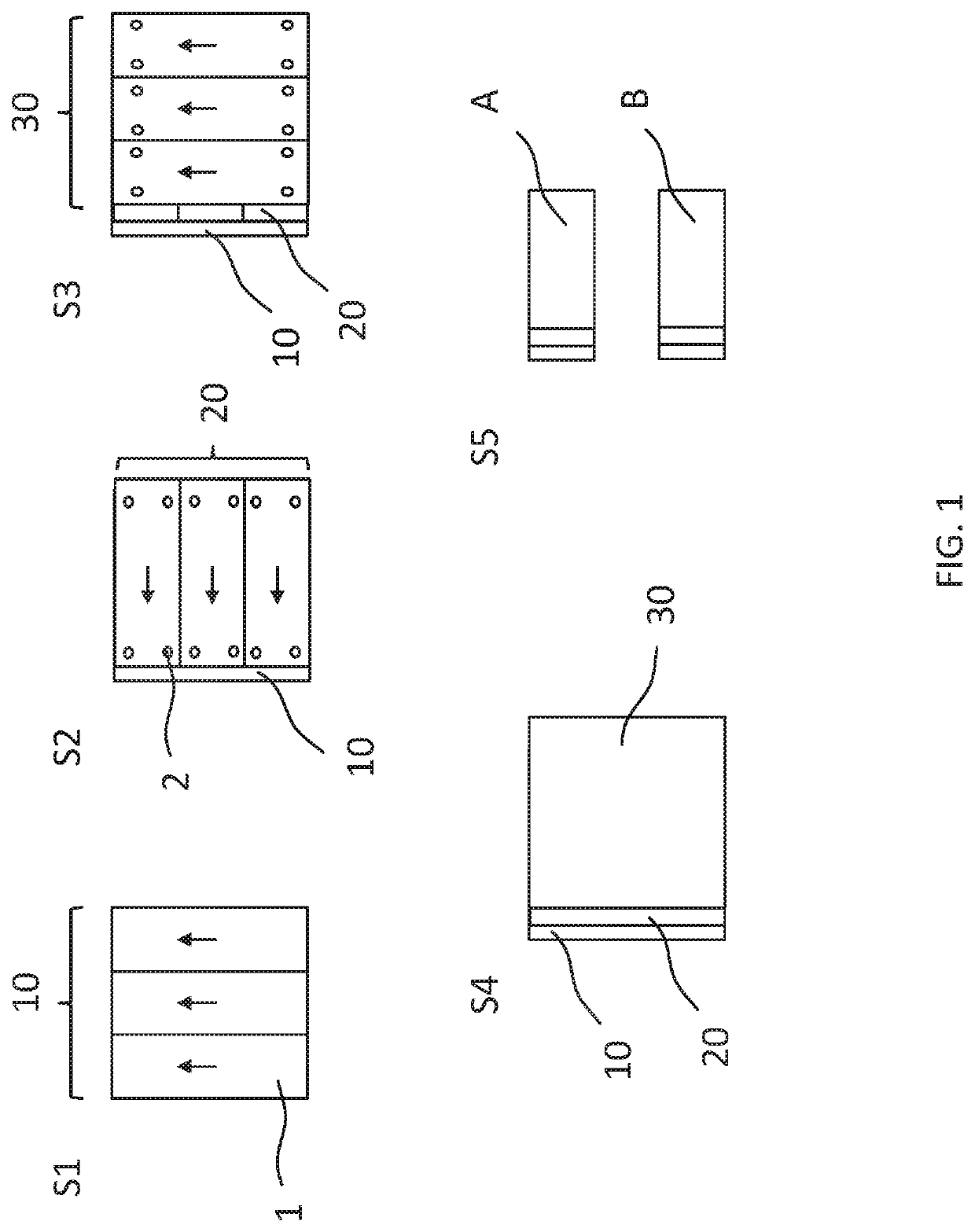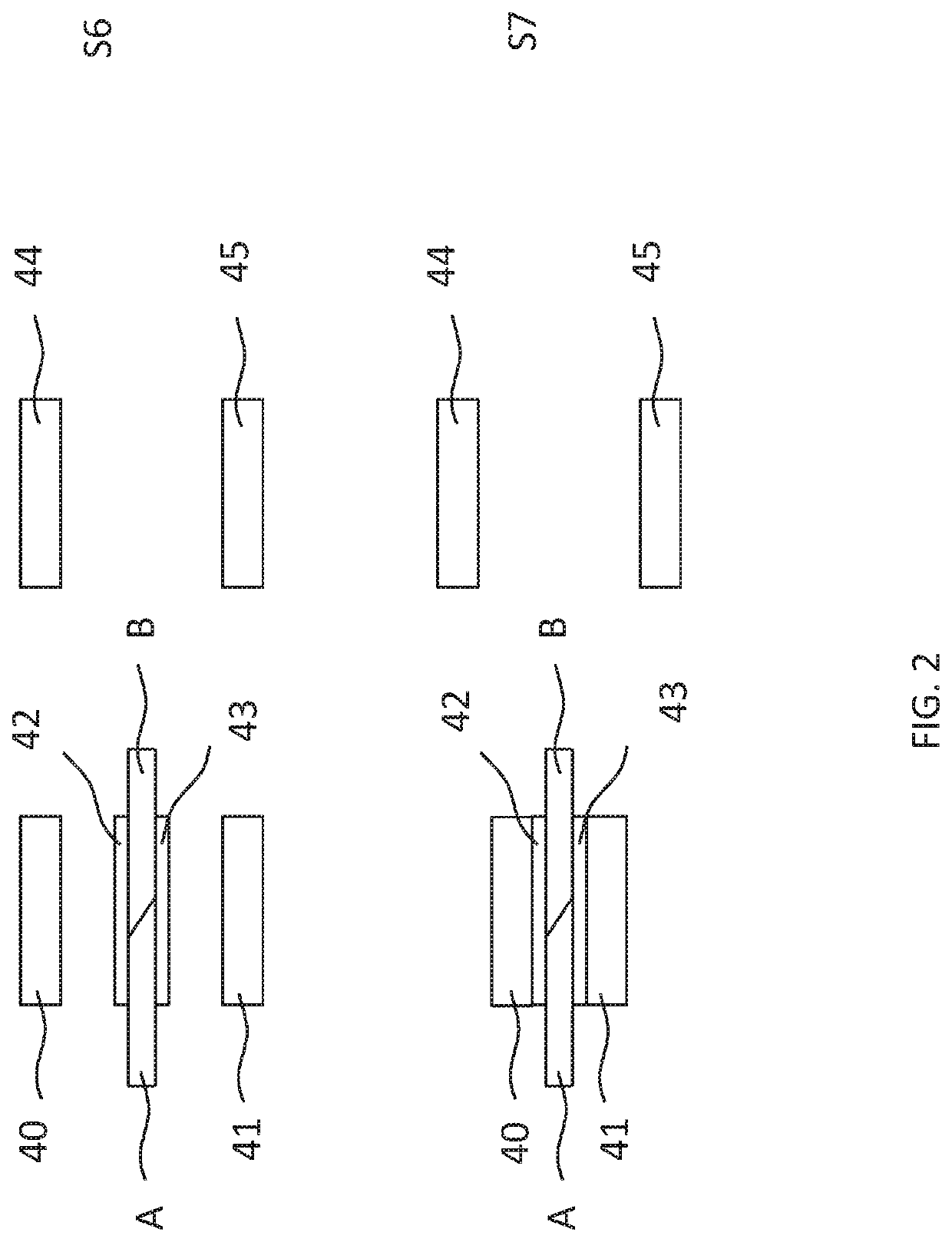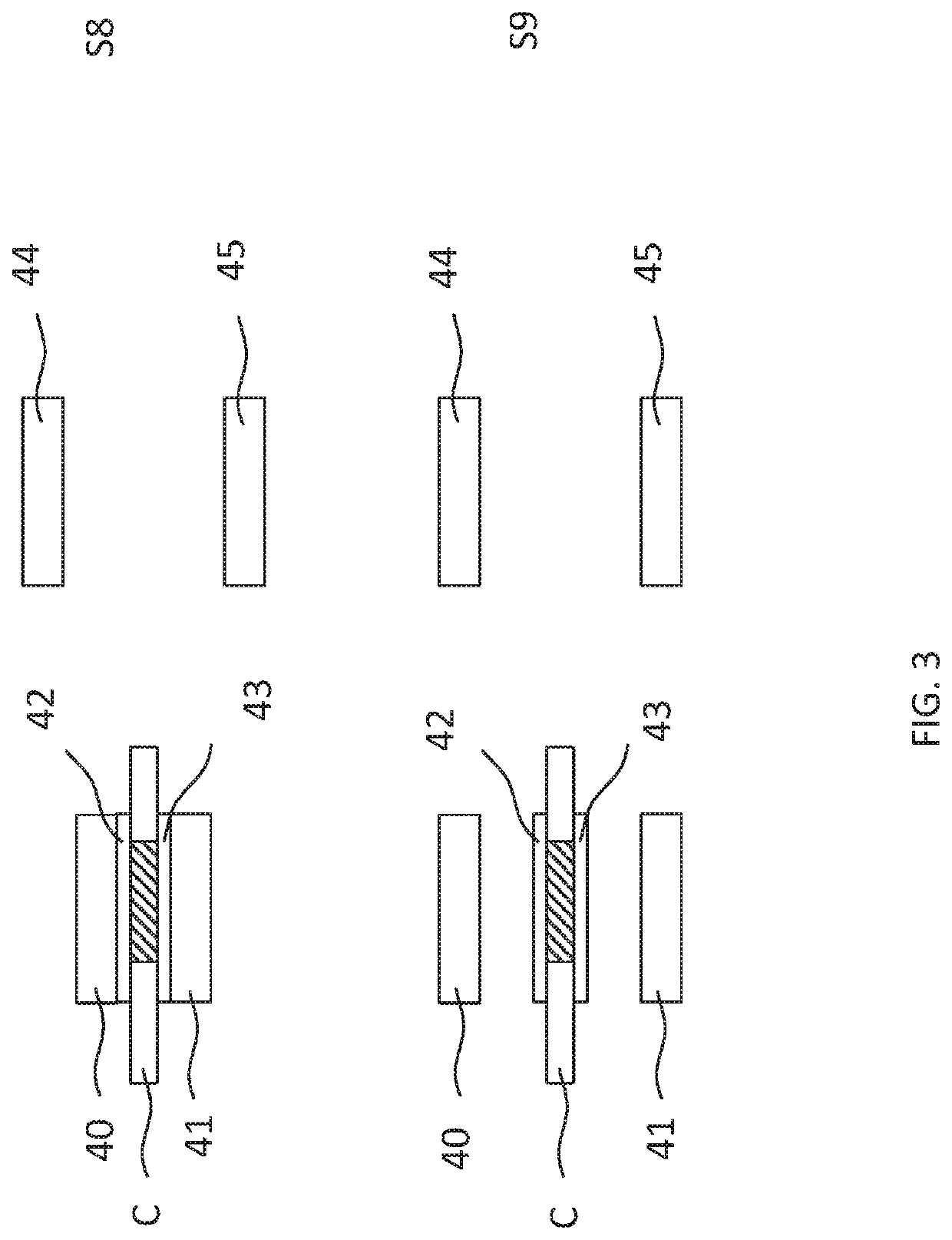Thermoplastic Composite Product
a technology of thermoplastic composite products and thermoplastic materials, which is applied in the field of manufacturing thermoplastic composite products, can solve the problems of reducing the strength between and the opposing fiber layers in the first and second components do not sufficiently cooperate to transfer forces from one component to another, so as to reduce the amount of thermoplastic materials and improve the strength of connection
- Summary
- Abstract
- Description
- Claims
- Application Information
AI Technical Summary
Benefits of technology
Problems solved by technology
Method used
Image
Examples
Embodiment Construction
[0055]FIG. 1 illustrates a method for manufacturing a first and second thermoplastic composite component having a ply drop off in accordance with the invention. As a first step S1, a plurality of unidirectional thermoplastic composite plies 1 is arranged with the orientation of the plies, indicated by the arrows in the figure, being identical. In FIG. 1, plies 1 are identical and comprise aligned reinforcing fibers that are encapsulated by a thermoplastic material. Together, plies 1 form a first layer 10. Plies 1 can be arranged on a table using a suitable robotic arm or may be arranged manually. In addition, plies 1 may be mutually fixated, e.g. using tack welding such as ultrasonic welding.
[0056]As a second step S2, another layer of plies 1 is arranged on top of plies 1 that were already placed albeit using a different orientation, e.g. 90 degrees difference. Together, plies 1 form a second layer 20. This process is repeated in a third step S3 for the formation of a third layer 30...
PUM
| Property | Measurement | Unit |
|---|---|---|
| Length | aaaaa | aaaaa |
| Temperature | aaaaa | aaaaa |
| Pressure | aaaaa | aaaaa |
Abstract
Description
Claims
Application Information
 Login to View More
Login to View More - R&D
- Intellectual Property
- Life Sciences
- Materials
- Tech Scout
- Unparalleled Data Quality
- Higher Quality Content
- 60% Fewer Hallucinations
Browse by: Latest US Patents, China's latest patents, Technical Efficacy Thesaurus, Application Domain, Technology Topic, Popular Technical Reports.
© 2025 PatSnap. All rights reserved.Legal|Privacy policy|Modern Slavery Act Transparency Statement|Sitemap|About US| Contact US: help@patsnap.com



